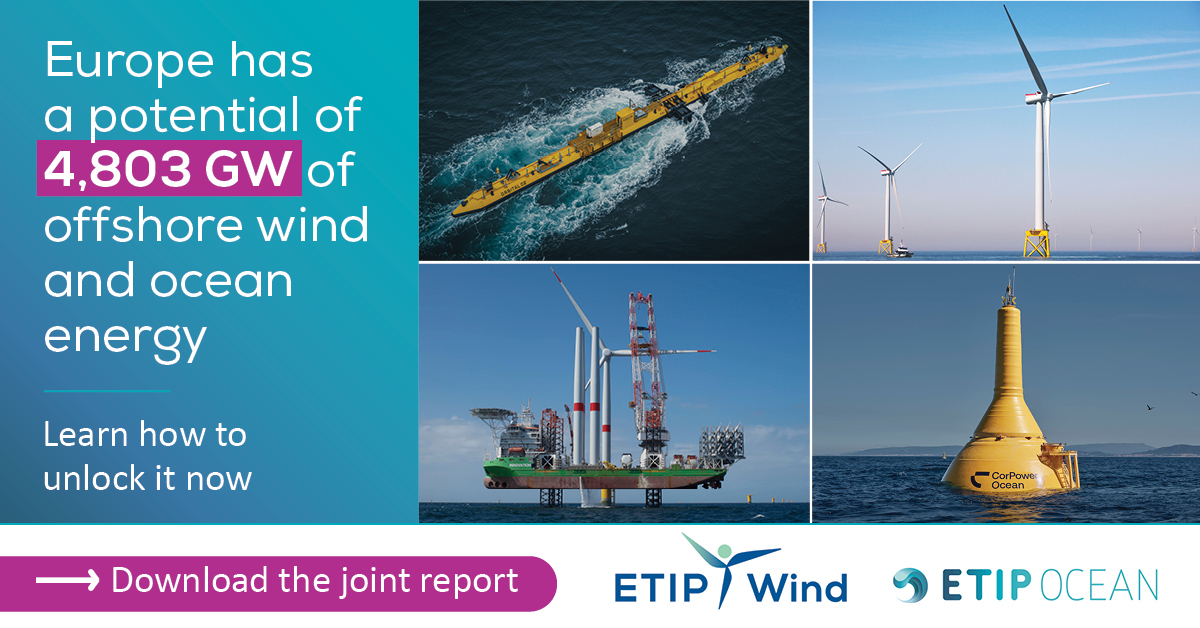On 18 October during a joint workshop on offshore renewables, ETIPWind and ETIP Ocean jointly released a new report titled “Offshore Renewables: Paving the Way for a Competitive and Climate-Neutral Europe by 2050”.
The report estimates the untapped potential of offshore wind (bottom-fixed and floating wind) and ocean energy (tidal and wave energy) in Europe and brings forward both policy and technical recommendations to unlock Europe’s full offshore energy potential.
The findings reveal that the offshore wind industry presents immense opportunities for Europe to achieve a competitive and climate-neutral future. With a total potential of 4,673 GW for offshore wind energy, unlocking this resource is critical to achieving a competitive and climate-neutral Europe by 2050.
This potential is spread across various sea basins, with the largest untapped potential to be found in the Atlantic Ocean and Mediterranean Sea. From the 4,673 GW potential figure, two thirds or 3,131 GW lies in waters deeper than 75 m and will mean deploying floating offshore wind technologies. Another 1,542 GW lies in waters that can be accessed with bottom-fixed offshore wind technologies.
The report also puts forward targeted Research & Innovation (R&I) joint areas that will play a vital role on optimising technoloigies and deploying offshore renewables. These areas include co-located project integration, quick connect/disconnect systems, or advanced port logistics which can streamline deployment and reduce costs.
Finally, the report also highlights the ripple effect of R&I investments in offshore wind and ocean technologies. Efficiency improvements in offshore wind operations can indeed lead to significant spillover effects across industries that are less mature.
Many policy measures can help deploy the offshore renewable energy potential in Europe. Market visibility through a clear auctionning calendar is one of them. But the offshore renewable industries also need improved Maritime Spational Planning, streamlined permitting, as well as tailored public financining mechanisms and a strengthened European grid.
The full report, detailing R&I pathways and policy recommendations to support the offshore energy sector, is available here.

